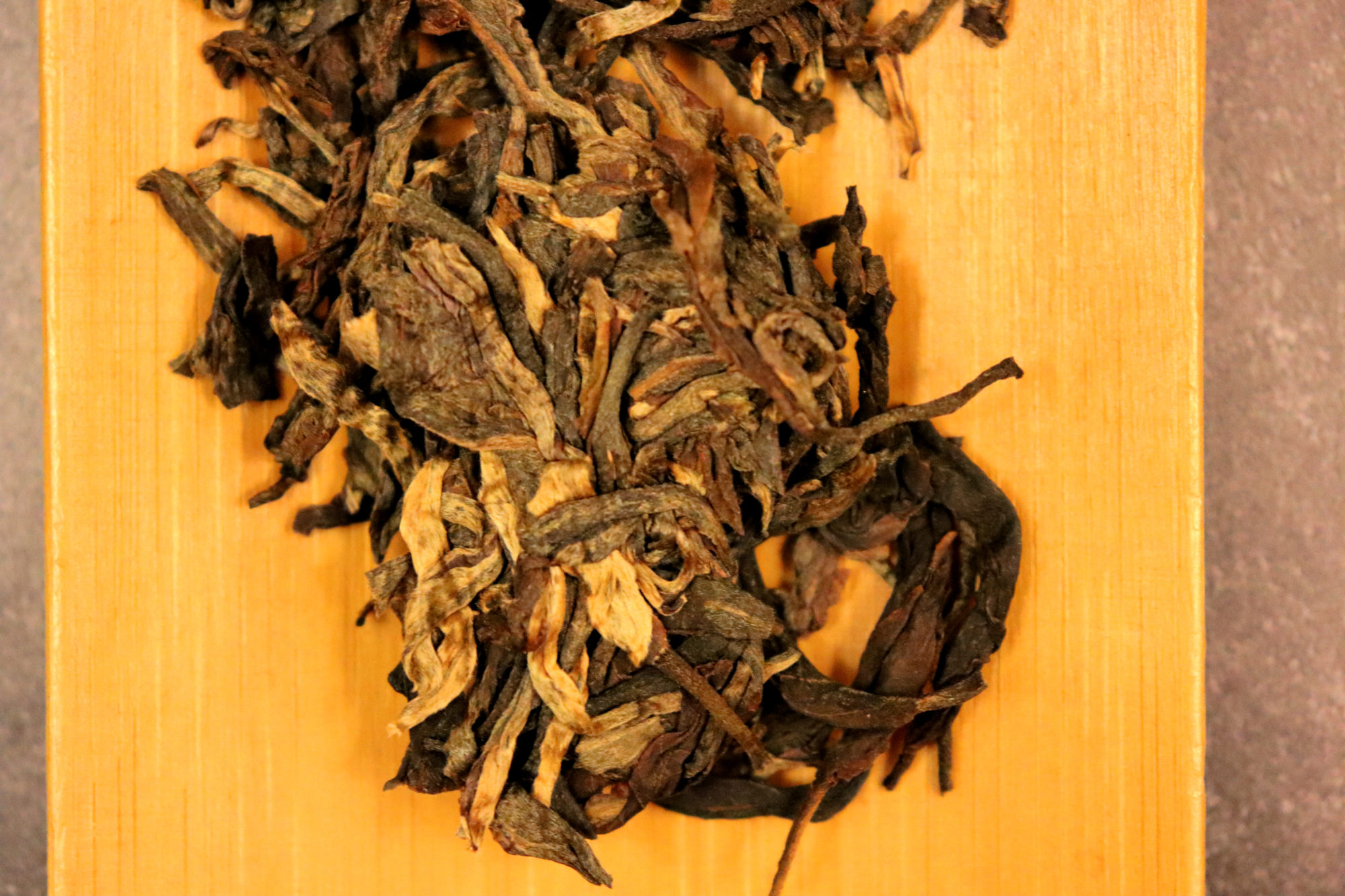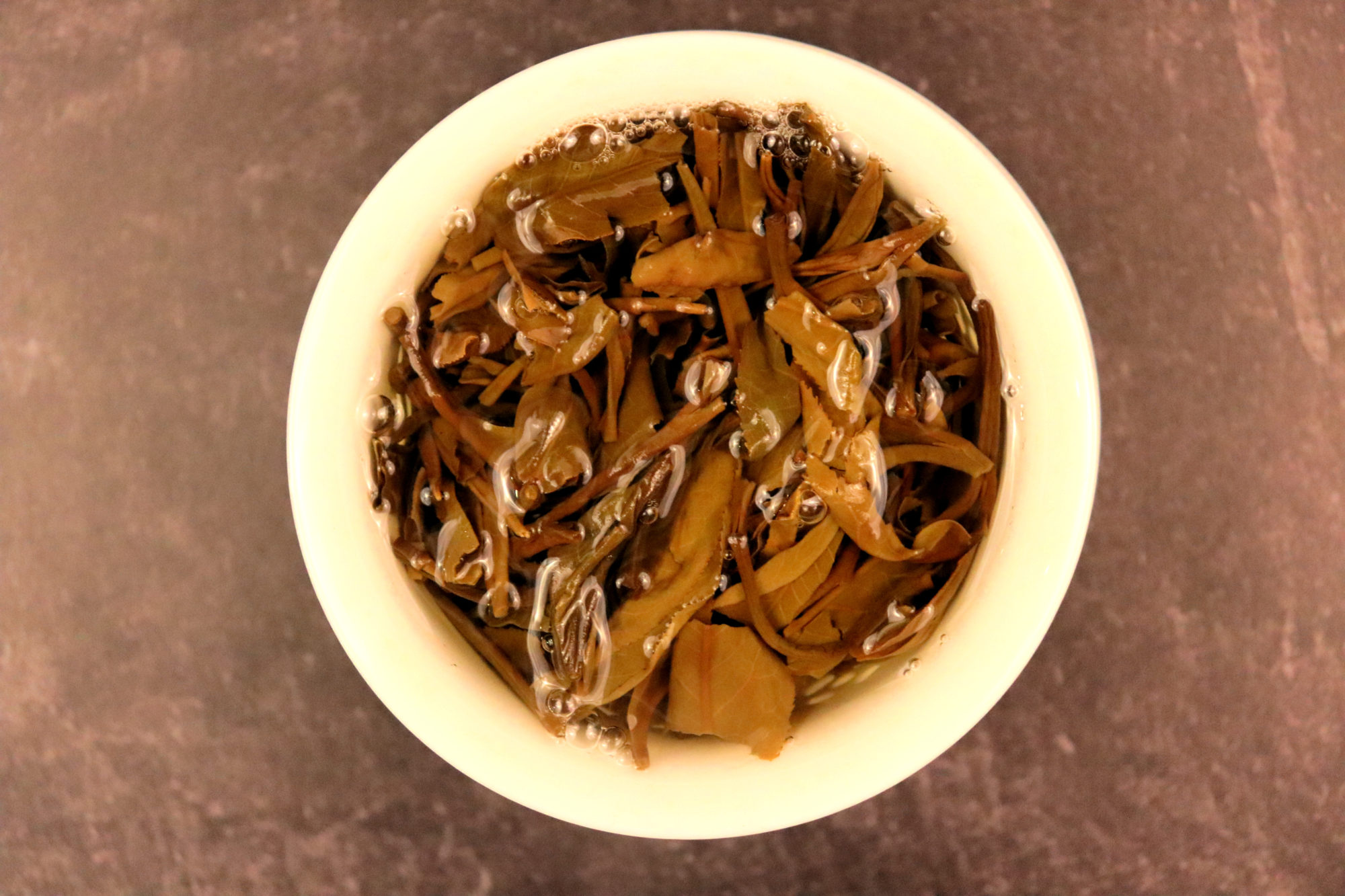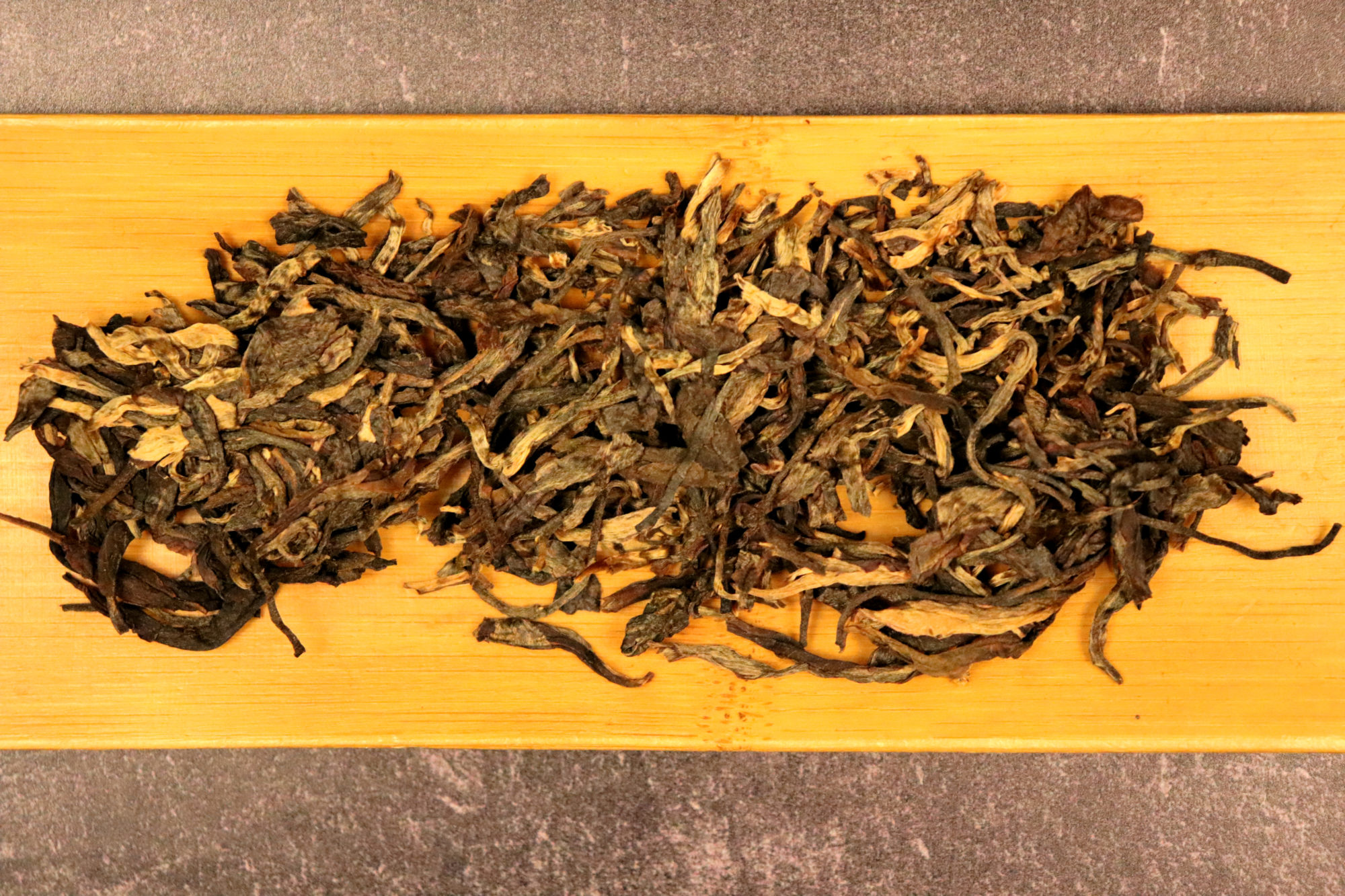Country of Origin: Thailand
Leaf Appearance: loosely compressed, mixed greens and browns
Steep time: 15 seconds
Water Temperature: 212 degrees
Preparation Method: porcelain gaiwan
Liquor: deep orangish gold
One of the main defining characteristics of puerh is that it is produced in China’s Yunnan Province. The trouble with that idea is that tea plants do not understand or respect humans’ ever-changing borders. Puerh from surrounding countries, like Thailand, is often referred to as border teas for that reason. 2014 Fox Raw Pu-erh Tea was made in the spring with leaves harvested from wild growing tea trees. Tea Side’s website states that it was produced by a small family who fired the leaves by hand and manually pressed the cakes with stone.
Leaf
My sample was fairly loosely compressed. I did not need to break it up at all to portion out leaves for brewing. The darker green and brown leaves were mostly whole, with buds distributed throughout. They had a strong vegetal aroma that I found very enjoyable. It’s hard to describe, but there is a roughness to wild-grown teas like this one. I mean that in the best way possible.
I brewed this tea gongfu style in my porcelain gaiwan. Tea Side didn’t provide recommendations for preparation, so I went with my own personal preference. I brewed 8g of leaves with fully boiling water. My infusions started at 15 seconds, gradually increasing that time with each round. This tea unfurled beautifully, revealing plump and juicy stems among the whole buds and larger leaves.

Liquor
2014 Fox Raw Pu-erh Tea brewed up a deep orangish gold liquor. The taste was sweet with intriguing notes of caramel and tropical fruits. These are NOT tasting notes that I would ever normally associate with sheng puerh. All of that natural sweetness balanced a firm astringency. There was a slightly grassy earthiness in the background that reminded me of dry hay.
This tea is fairly punchy, so I would definitely recommend brewing with a lighter hand unless you enjoy really strong puerh. The mouthfeel was fairly thick. I wouldn’t call it oily, but it felt heavy. Hints of orchid popped up in later infusions and lingered on my palate long after each sip. Overall this tea was a surprisingly complex adventure into Thai puerh. I will definitely be looking to explore more of them because of it.
Have you ever tried 2014 Fox Raw Pu-erh Tea? Let me know your thoughts in the comments below!
2014 Fox Raw Pu-erh Tea sample provided for review by Tea Side.

